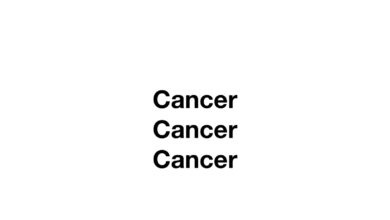ADULT CANCER SURVIVORS: WHAT ARE FAMILY DOCS TO DO?

Cancer is by far the scariest diagnosis patients receive. Every patient is filled with anxiety when just the word “CANCER” is mentioned in the same sentence or paragraph as their name. Once an individual has been diagnosed with, and treated for, Cancer, there is nothing that occupies your personal medical thoughts more. Any little bump, bruise, growth, or peculiar pain becomes recurrent cancer until proven otherwise. Maintaining a relationship with your oncologist is critically important for regular follow-ups and long-term management of the disease, but having a similar relationship with your family physician is just as important.
Every year more people are diagnosed with Cancer and every year, more people become survivors of this dreaded disease. The biggest fear Cancer survivors have is a recurrence of the disease or the development of a new Cancer, unrelated to the previous malignancy. Once a Cancer patient reaches the milestone of being “Cancer-free” for five years, oncology specialists will frequently declare a patient “cured,” and release them from their care, warning them to return if any problems develop. The oncologist is relinquishing their responsibility for the patient and returning him/her to the family physician. It is incumbent upon the family doctor to have a plan to continue to surveil the patient to detect any problems as soon as they arise. The family doctor then assumes responsibility for the patient’s ongoing health care. The primary care physician has five specific responsibilities to fulfill. Those are the following:
The Family Physician has responsibility for
- Surveillance for cancer recurrence
- Surveillance for new primary cancers
- Management of long-term physical and psychological effects of treatment
- Prevention of late treatment effects
- Coordination of care between oncology team and primary care physicians
Surveillance for Cancer recurrence is individualized for each patient. What follow-up studies, and the frequency of having these studies, is dependent upon the type of Cancer and the stage at which it was diagnosed. At five years, it is assumed the patient is Cancer-free. Guidelines for the follow-up of each type of Cancer have been established and should be followed. For example, Stage I colorectal Cancer warrants a colonoscopy 1 year after surgery. Stage II, III require a CEA test every 2-6 months for 2 years, CT of the chest, abdomen, and pelvis, every 6-12 months for 5 years, and a colonoscopy 1 year after surgery for CRC. These protocols exist for all varieties of Cancer and adherence to the components is important.
Surveillance for new primary Cancers is important because nearly 1 in 12 Cancer survivors develop a second primary Cancer. A new lung Cancer is the most common type of second primary and has a 50% mortality rate. Cancer screenings appropriate for the patient’s age and sex are recommended. Mammography, CT of abdomen, chest, and pelvis, and colonoscopy, are the minimum recommendations, with a complete physical examination annually.
Management of the long-term physical and psychological effects of treatment can be just about anything from anxiety, depression, insomnia, sexual dysfunction from psychological stressors to cardiac arrhythmias, neuropathies, pain, lymphedema, and myopathies, direct results of harm caused by specific oncology drugs. Chemotherapy kills Cancer cells, but also has numerous harmful effects on normal tissues. These long-term problems may not be controllable, and thus pose a huge challenge for the family physician.
Preventing the late effects of treatment such as cardiovascular complications of any type, ie. arrhythmias, cardiomyopathies, hypertension, hyperlipidemia, and even diabetes, it’s important for improving quality of life of Cancer survivors. Prevention is very difficult because one never knows which patients will have adverse effects, and it can be many years after treatment before problems appear. Insisting upon smoking cessation, weight loss, proper nutrition, reduction of alcohol intake, and physical exercise are essential to healthcare maintenance and prevention of late effects.
Coordination of care with the oncology team goes without saying. Both medical teams caring for the patients should communicate regularly and report to each other the patient’s status.
The success of following survivors of Cancer is based entirely upon the diligence and adherence to protocol of the oncology and primary care physicians who care for the patient. Doctors must be concerned with diligently looking for problems rather that trying to appease patients by minimizing the importance of surveillance. The mistake often made is to skip a CT or MRI or PET scan because the doctor decides “you’re doing well,” without being absolutely certain.
The fact that cancer survivorship is even being discussed like this is a good thing and a testament to the success of screenings and treatment protocols. With time and further research, these statistics will only get better.
Reference: Carey S, Emerson JF, Patel J. Primary Care of Adult Cancer Survivors Am Fam Phys 2024 July;110(2):37-44.



